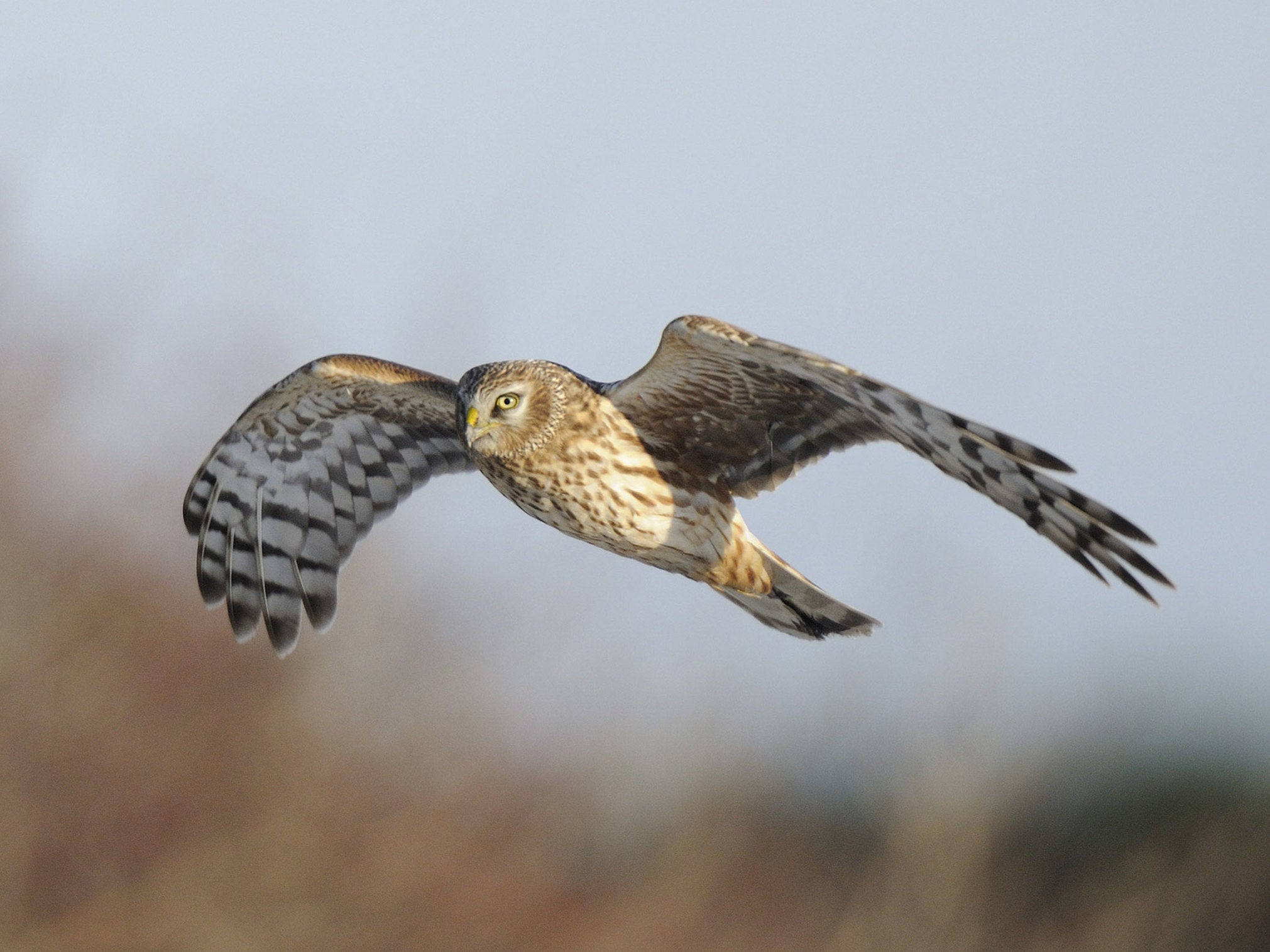Record number of endangered hen harriers reared in England
Glimmer of hope for Britain's most threatened bird of prey but campaigners warn of challenge ahead

Your support helps us to tell the story
From reproductive rights to climate change to Big Tech, The Independent is on the ground when the story is developing. Whether it's investigating the financials of Elon Musk's pro-Trump PAC or producing our latest documentary, 'The A Word', which shines a light on the American women fighting for reproductive rights, we know how important it is to parse out the facts from the messaging.
At such a critical moment in US history, we need reporters on the ground. Your donation allows us to keep sending journalists to speak to both sides of the story.
The Independent is trusted by Americans across the entire political spectrum. And unlike many other quality news outlets, we choose not to lock Americans out of our reporting and analysis with paywalls. We believe quality journalism should be available to everyone, paid for by those who can afford it.
Your support makes all the difference.Dozens of hen harrier chicks have been successfully reared in England this year in what has been a "record" breeding season for the threatened bird.
There were a total of 15 nests, with 15 successful breeding pairs and 47 chicks, outdoing the previous recorded best for England in 2006 of 46 birds, government conservation agency Natural England said.
Tony Juniper, the agency's chairman welcomed the "better breeding season" but warned hen harrier numbers were still far from where they should be, with the birds of prey victims of illegal persecution.
Over the last two years, 81 chicks have been raised to fledging, outstripping the total for the previous five years combined, the figures show.
Chicks have also hatched in a wider variety of areas this year, including in Northumberland, Yorkshire Dales, Nidderdale, Derbyshire and Lancashire.
It marks an improvement from a low point just a few years ago, when there were no successful nests or fledged chicks in 2013, raising fears the bird was becoming extinct as a breeding species in England.
Hen harriers are England's most threatened bird of prey, as their food source of red grouse chicks to feed their young brings them into conflict with commercial shooting estates.
Many of this year's chicks have been fitted with satellite tags, which will allow Natural England to monitor what happens to the birds.
A study released by the agency earlier this year analysing satellite tagging data found young hen harriers suffer abnormally high death rates with illegal killing the most likely cause.
But this year's breeding season saw 11 successful nests on grouse moors, the figures released ahead of the start of the grouse shooting season show.
Diversionary feeding, in which alternative food is provided for the harriers to prevent them preying on grouse chicks, was employed at six nests.
This year also saw the first trial "brood management scheme" at one nest, in which harrier chicks were removed from their nest to prevent predation of grouse and released back into the area once they could fend for themselves.
The use of brood management has been welcomed by moorland managers as a "vitally important" part of the efforts to bring back the hen harrier.
But it has been challenged by the RSPB as "the wrong tool" , with the wildlife charity saying the first step in hen harrier recovery should be the ending of illegal persecution.
Despite the successes, three nests in Northumberland failed, with two washed out by bad weather and one lost to predators.
Mr Juniper said: "While it is very welcome to see this improvement, we must remember that the hen harrier is still very far from where it should be as a breeding species in England, not least due to illegal persecution.
"I will be working with Natural England colleagues to pursue all options for the recovery of this wonderful bird, a creature that inspires and brings joy to so many people.
"It would be a tragic loss for our country, children and grandchildren if this majestic bird was to remain so scarce, or even disappear, in the future."
Amanda Anderson, director of the Moorland Association, said: "It has been a fantastic year for hen harriers with a year-on-year increase in both the geographical range of the nests and the type of land on which they have successfully fledged, most notably on privately owned grouse moors.
"The collaboration on the ground has been second to none. There is a real commitment to restoring the population among those with rural and conservation interests at heart and we believe that we are beginning to turn a corner."
Chris Corrigan, the RSPB's director for England said: "We share Natural England's joy that 15 nests successfully fledged 47 chicks this year.
"However, this success is tarnished by the clear evidence that illegal killing continues with no sign of it coming to an end.
"By the Government's own figures we should have over 300 pairs of hen harriers skydancing above the English countryside, and yet the species remains on the brink of local extinction."
PA
Join our commenting forum
Join thought-provoking conversations, follow other Independent readers and see their replies
Comments